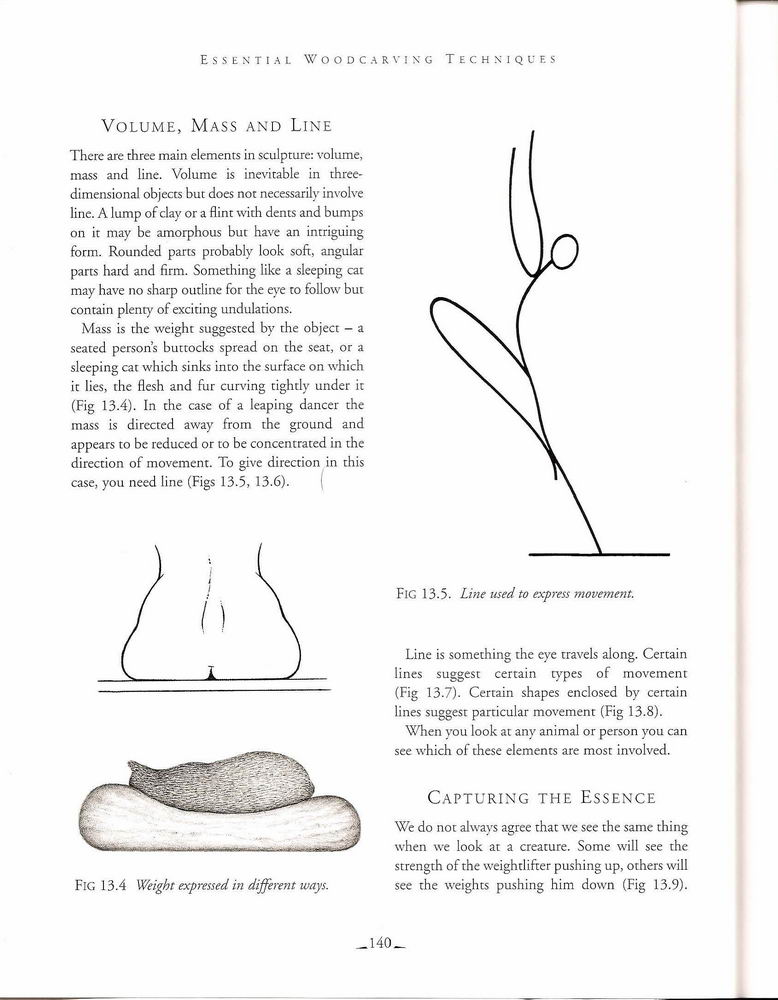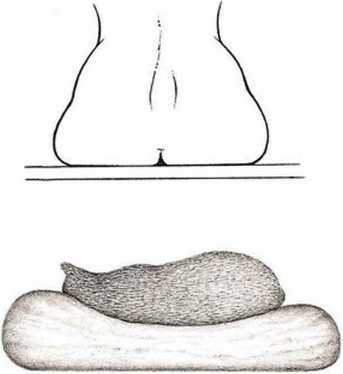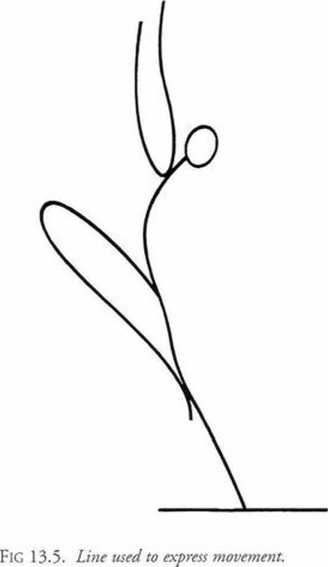essentÊrving±40

E S S E N T I A L W O O D C A R V I X G T E C H X 1 Q U E S
Volume, Mass and LinÄ™
Thcrc arc three main elements in sculpture: volume, mass and linÄ™. Volume is inevicable in three* dimensional objects but does not necessarily involve linÄ™. A lump of clay or a flint with dents and bumps on it may be amorphous but havc an intriguing form. Rounded parts probably look soft, angular parts hard and firm. Something like a sleeping cat may have no sharp outline for the eye to follow but contain plenty of exciting undulations.
Mass is the weight suggested by the object - a seated persons buttocks spread on the seat, or a sleeping cat which sinks into the surface on which it lies, the flesh and fur curving tightly under it (Fig 13.4). In the case of a leaping danccr the mass is dircctcd away from the ground and appears to be rcduced or to be concentrated in the direction of movemcnt. To give direction in this case, you need linÄ™ (Figs 13.5, 13.6). 1

Fic 13.4 Weight expressed in different ways.

LinÄ™ is something the eye travels along. Certain lines suggest certain cypes of movement (Fig 13.7). Certain shapes enclosed by certain lines suggest particular movement (Fig 13.8).
When you look at any animal or person you can see which of these elements are most involved.
CAPTURING THE ESSENCE
We do not always agree that we see the same thing when we look at a creature. Some will see the strengrh of the weightlifter pushing up, others will see the weights pushing him down (Fig 13.9).
_140 _
Wyszukiwarka
Podobne podstrony:
IMGG12 (3) Sphenopolntlno The intctnal (ml) carotkl ai-tery (a.) and ofUk nem (a) arc prominent nul
UNIT 5THE BODY CAYITIES There are three main cavities in the human body: the cranial cavity, the tho
essent?rving?27 CHAPTER 2SELECTING AND BUYING SUITABLE WOOD The Beginner’s Experience Thcrc is
63 FigurÄ™ 2.3 Mass and sex independent Msum variation over the natural rangÄ™ of weather conditions.
history and the institutionalisation process of the Decade in Germany together with three successful
222Arquivos de Zoologia Figs 179-188 Melanoides luberculatus anatomy: 179) buccal mass and csophagus
227Vol. 36(2), 2001 Figs 215-224 Doryssa ipupiara anatemy: 215) buccal mass and csophagus, bolli opc
DEVELOPMENT AND ASSESSMENT OF THE MUTUAL FUNDS MARKET IN POLANDSumma ry Mulual funds arc playing mo
więcej podobnych podstron